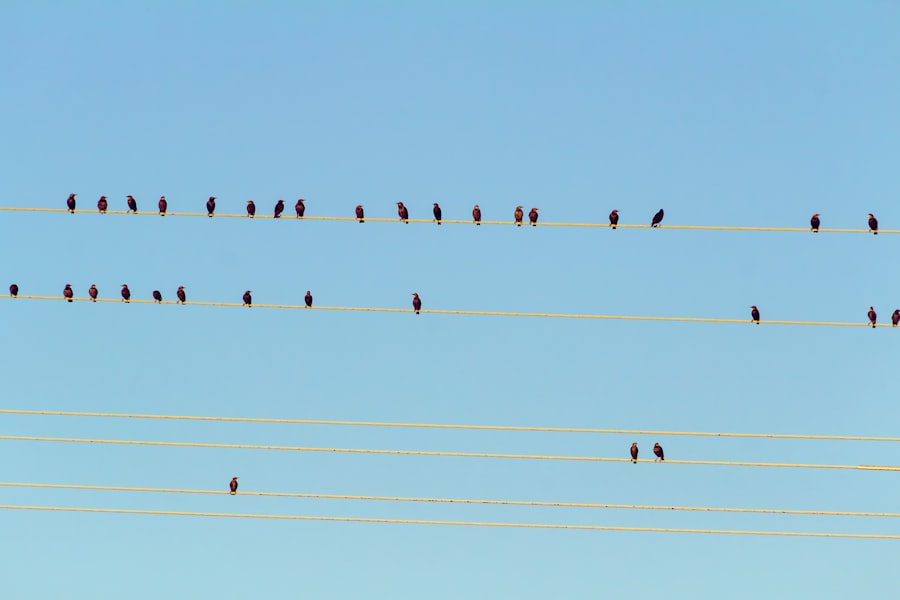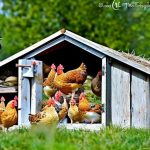Keeping peacocks and chickens together presents unique opportunities and challenges for poultry keepers. Peacocks, known for their striking plumage, and chickens, valued for their egg and meat production, can form a visually diverse and interesting flock. However, these species have distinct care and housing requirements that must be addressed for successful cohabitation.
Integrating peacocks with chickens requires careful consideration of their different needs, potential conflicts, and the benefits of mixed-species flocks. This article examines the specific care and housing requirements for each species, potential challenges in their coexistence, advantages of keeping them together, methods for introducing peacocks to an established chicken flock, and strategies for managing their interactions effectively. Understanding these factors is crucial for poultry keepers considering a mixed flock of peacocks and chickens.
Table of Contents
- 1 Differences in Care and Housing Requirements
- 2 Potential Challenges and Considerations
- 3 Benefits of Keeping Peacocks and Chickens Together
- 4 Tips for Introducing Peacocks to a Chicken Flock
- 5 Managing Peacock and Chicken Interactions
- 6 Conclusion and Final Considerations
- 7 FAQs
- 7.1 Can peacocks and chickens be kept together?
- 7.2 What are the space requirements for keeping peacocks and chickens together?
- 7.3 Are there any potential issues with keeping peacocks and chickens together?
- 7.4 What should be considered when introducing peacocks to a chicken flock?
- 7.5 Do peacocks and chickens have similar dietary needs?
Key Takeaways
- Keeping peacocks with chickens can be a rewarding experience, but it requires careful consideration and planning.
- Peacocks have different care and housing requirements compared to chickens, including the need for more space and specialized roosting areas.
- Potential challenges of keeping peacocks and chickens together include aggression, disease transmission, and dietary differences.
- Benefits of keeping peacocks and chickens together include pest control, aesthetic appeal, and potential for mutual protection.
- When introducing peacocks to a chicken flock, it’s important to do so gradually and provide separate feeding and watering areas to prevent competition.
Differences in Care and Housing Requirements
Dietary and Spatial Needs
Peacocks are larger and more active birds compared to chickens, requiring more space to roam and roost. They are also more prone to flying and may require higher fencing to prevent them from escaping. Additionally, peacocks have specific dietary needs, requiring a higher protein diet than chickens. Their larger size also means they need more water and larger feeding areas.
Housing Preferences
When it comes to housing, peacocks prefer to roost in trees or high perches, while chickens prefer low roosts or nesting boxes. Understanding these differences is crucial when planning the housing and care for a mixed flock of peacocks and chickens.
Breeding and Nesting Behavior
Peacocks also have specific needs when it comes to breeding and nesting. They require secluded areas for nesting and may become territorial during breeding season. Chickens, on the other hand, are more adaptable when it comes to nesting and breeding, often sharing nesting boxes without issue. Understanding these differences in breeding behavior is important when considering keeping peacocks and chickens together.
Environmental Considerations
Additionally, peacocks are more sensitive to cold temperatures compared to chickens, so providing adequate shelter and protection from the elements is essential for their well-being. Overall, the differences in care and housing requirements between peacocks and chickens must be carefully considered when integrating them into a shared living space.
Potential Challenges and Considerations

Integrating peacocks with chickens can present several potential challenges that need to be carefully considered. One of the main challenges is the potential for aggression between the two species. Peacocks can be territorial and may display aggressive behavior towards chickens, especially during breeding season.
This can lead to injuries or stress for the chickens, so it’s important to monitor their interactions closely. Additionally, peacocks are known for their loud calls, which can be disruptive to chickens and nearby neighbors. Managing the noise levels of peacocks is an important consideration when keeping them with chickens.
Another potential challenge is the risk of disease transmission between peacocks and chickens. While both species are susceptible to certain diseases, they may have different immune responses and disease susceptibilities. It’s important to practice good biosecurity measures to prevent the spread of diseases within the mixed flock.
Additionally, providing separate feeding and watering areas for peacocks and chickens can help minimize the risk of disease transmission. Furthermore, integrating peacocks with chickens may require additional space and resources to accommodate the different needs of each species. Peacocks require more space to roam and roost, as well as specific dietary requirements that may differ from those of chickens.
Providing adequate space, shelter, and resources for both peacocks and chickens is essential for their well-being. Considering these potential challenges and making necessary accommodations is crucial for successfully keeping peacocks with chickens.
Benefits of Keeping Peacocks and Chickens Together
Despite the potential challenges, there are several benefits to keeping peacocks and chickens together in a mixed flock. One of the main benefits is the visual appeal of having a diverse flock with both peacocks’ vibrant plumage and chickens’ variety of breeds and colors. This can create a visually striking and unique flock that is enjoyable to observe.
Additionally, peacocks can serve as natural predators for pests such as insects and small rodents, helping to keep the chicken coop area free from unwanted pests. Their keen eyesight and alert nature make them effective at spotting potential threats to the flock. Furthermore, peacocks can add an element of security to the flock by serving as natural alarm systems.
Their loud calls can alert the flock to potential dangers, helping to protect both peacocks and chickens from predators. Another benefit of keeping peacocks with chickens is the potential for increased fertility in the flock. Peacocks’ presence can stimulate breeding behavior in chickens, leading to increased egg production and successful hatching rates.
Overall, keeping peacocks with chickens can provide several benefits, including visual appeal, pest control, security, and increased fertility within the flock.
Tips for Introducing Peacocks to a Chicken Flock
Introducing peacocks to an existing chicken flock requires careful planning and consideration to ensure a smooth transition for both species. One important tip is to gradually introduce the peacocks to the chicken flock over a period of time. This can help minimize stress and aggression between the two species.
Providing a separate enclosure within the chicken coop area for the peacocks initially can allow them to become familiar with the chickens without direct contact. Another tip is to monitor their interactions closely during the introduction process. Observing their behavior can help identify any signs of aggression or stress, allowing for timely intervention if necessary.
Providing ample space for both peacocks and chickens during the introduction process can also help reduce tension between the two species. Additionally, providing multiple feeding and watering areas can help minimize competition between peacocks and chickens during the introduction phase. This can help reduce potential conflicts over resources as they adjust to sharing living space.
Furthermore, providing enrichment activities such as perches or hiding spots for both peacocks and chickens can help alleviate boredom and reduce stress during the introduction process. Overall, taking a gradual approach to introducing peacocks to a chicken flock, monitoring their interactions closely, providing ample space and resources, and offering enrichment activities can help facilitate a successful integration process.
Managing Peacock and Chicken Interactions

Managing Interactions between Peacocks and Chickens
Providing Adequate Space and Resources
Managing interactions between peacocks and chickens is essential for maintaining harmony within a mixed flock. One important aspect of managing their interactions is providing adequate space for both species to roam and roost comfortably. This can help reduce competition for resources and minimize potential conflicts between peacocks and chickens.
Minimizing Competition and Stress
Another key consideration is providing separate feeding and watering areas for peacocks and chickens to minimize competition over resources. This can help reduce stress and aggression between the two species. Additionally, monitoring their interactions closely on a regular basis can help identify any signs of aggression or stress early on, allowing for timely intervention if necessary.
Observing Behavior and Providing Environmental Enrichment
Observing their behavior during feeding times, roosting, or breeding season can provide valuable insights into their interactions. Furthermore, providing environmental enrichment such as perches, hiding spots, or natural vegetation within the living space can help alleviate boredom and reduce potential conflicts between peacocks and chickens.
Promoting Harmony within the Mixed Flock
Overall, managing interactions between peacocks and chickens requires providing adequate space, resources, monitoring their behavior closely, and offering environmental enrichment to promote harmony within the mixed flock.
Conclusion and Final Considerations
In conclusion, keeping peacocks with chickens can be a rewarding experience that offers several benefits such as visual appeal, pest control, security, and increased fertility within the flock. However, it’s important to carefully consider the differences in care and housing requirements between peacocks and chickens, as well as potential challenges such as aggression, disease transmission, and resource competition. Taking a gradual approach to introducing peacocks to a chicken flock, monitoring their interactions closely, providing adequate space and resources, and offering environmental enrichment are essential for successful cohabitation.
Ultimately, successful integration of peacocks with chickens requires careful planning, patience, and ongoing management of their interactions to ensure a harmonious living environment for both species. By understanding their unique needs and behaviors, poultry enthusiasts can create a diverse and thriving mixed flock that brings joy and beauty to their homestead or farm.
If you’re considering keeping peacocks with chickens, it’s important to ensure that your chicken coop is large enough to accommodate both species. According to a helpful article on Poultry Wizard, the size of your chicken coop door is crucial for allowing both chickens and peacocks to move freely in and out of the coop. The article provides valuable information on how to determine the appropriate size for your coop door to accommodate different types of poultry. This is essential knowledge for anyone looking to create a harmonious living environment for their peacocks and chickens. (source)
FAQs
Can peacocks and chickens be kept together?
Yes, peacocks and chickens can be kept together in the same coop or living space. However, it’s important to consider the space requirements and the potential for aggression between the two species.
What are the space requirements for keeping peacocks and chickens together?
Peacocks and chickens require ample space to roam and forage. It’s recommended to provide at least 100 square feet of space per bird to ensure they have enough room to move around comfortably.
Are there any potential issues with keeping peacocks and chickens together?
One potential issue is aggression, as peacocks can be territorial and may display aggressive behavior towards chickens. It’s important to monitor their interactions and separate them if necessary.
What should be considered when introducing peacocks to a chicken flock?
When introducing peacocks to a chicken flock, it’s important to do so gradually and monitor their interactions closely. Providing multiple feeding and watering stations can help reduce competition and potential aggression.
Do peacocks and chickens have similar dietary needs?
Peacocks and chickens have similar dietary needs and can be fed a combination of poultry feed, grains, and insects. It’s important to ensure that both species have access to appropriate food and water sources.

Meet Walter, the feathered-friend fanatic of Florida! Nestled in the sunshine state, Walter struts through life with his feathered companions, clucking his way to happiness. With a coop that’s fancier than a five-star hotel, he’s the Don Juan of the chicken world. When he’s not teaching his hens to do the cha-cha, you’ll find him in a heated debate with his prized rooster, Sir Clucks-a-Lot. Walter’s poultry passion is no yolk; he’s the sunny-side-up guy you never knew you needed in your flock of friends!
Meet Walter, the feathered-friend fanatic of Florida! Nestled in the sunshine state, Walter struts through life with his feathered companions, clucking his way to happiness. With a coop that’s fancier than a five-star hotel, he’s the Don Juan of the chicken world. When he’s not teaching his hens to do the cha-cha, you’ll find him in a heated debate with his prized rooster, Sir Clucks-a-Lot. Walter’s poultry passion is no yolk; he’s the sunny-side-up guy you never knew you needed in your flock of friends!







